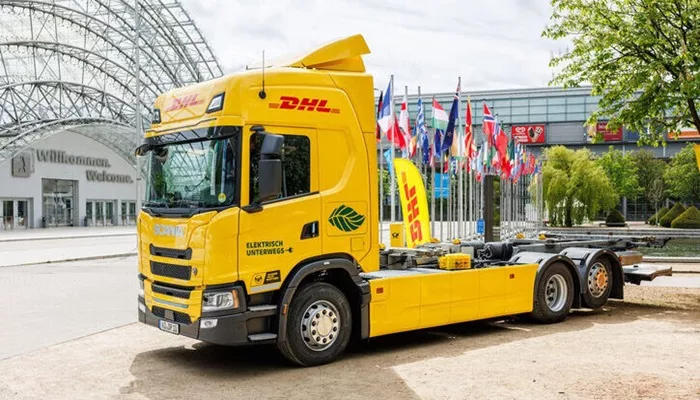A new hybrid electric truck tested by DHL has shown strong results in reducing emissions, the company has reported. In the first 100 days of its trial, the extended-range electric vehicle (EREV) — developed with commercial vehicle manufacturer Scania — cut carbon dioxide emissions by more than 90% compared to a standard diesel truck.
The EREV is mainly powered by electricity but includes a small fuel-powered generator. This backup unit produces electricity to recharge the battery when needed. Since February, the truck has been transporting parcels between Berlin and Hamburg.
During the trial, the vehicle drove nearly 22,000 kilometers. It ran on electric power for more than 90% of the distance. The onboard generator was used in only 8.1% of the kilometers traveled. This helped achieve the significant reduction in emissions.
Unlike a fully electric truck, the EREV offers extra flexibility. It can keep operating even when no charging station is available. However, the generator does not directly drive the wheels. This sets the EREV apart from conventional hybrid vehicles.
DHL believes this new system could help speed up the shift to greener transport. But the company also warns that current laws and regulations must evolve to support such technology.
Tobias Meyer, CEO of DHL Group, said the transition to fully electric freight transport will take time. “The grid and charging infrastructure are not yet ready,” he said. “But we should not have to wait.”
Meyer urged policymakers to support transitional technologies like the EREV. “We all want fewer emissions through e-mobility,” he added. “We need quick, pragmatic decisions. Regulation should help us decarbonize transport now, not hold us back.”
Early Results Show Promise
The EREV has been operating within DHL’s Post & Parcel Germany division. It runs the route between parcel centers in Ludwigsfelde, near Berlin, and Hamburg — a distance of around 250 kilometers.
The truck usually completes the trip using electricity from the grid, which is sourced from renewable energy. On colder days, or when charging stations were unavailable or out of service, the fuel-powered generator kicked in. This backup made route planning more reliable, a key factor in logistics.
According to DHL, 91.9% of the vehicle’s energy came from grid-charged electricity during the test phase. Only 8.1% was supplied by the range extender.
Compared to a diesel truck, the EREV saved more than 16 metric tons of CO2-equivalent emissions over the 100-day trial. DHL said these savings could be even greater in the future if the generator is powered by renewable fuels, such as biodiesel.
The trial highlights the potential of bridging technologies in freight transport. DHL sees the EREV as a practical step toward cleaner logistics while fully electric infrastructure continues to develop.

